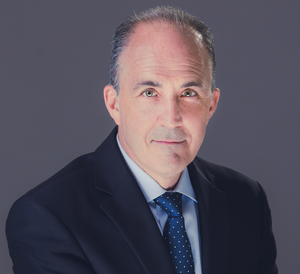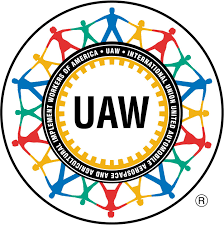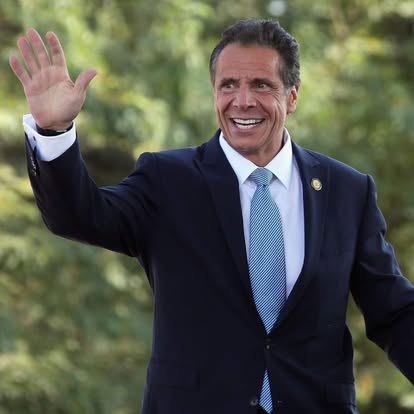New York, NY – Matt Chartrand is the Ironworkers Local 361 Business Manager and Financial Secretary-Treasurer. The Brooklyn native and married father of four has been in office in the Local since 2004, when he became a Business Agent/Vice President. He was elected president in 2008 and also was assistant apprentice coordinator. He has held his present position since July of 2013. LaborPress spoke with Chartrand about his personal journey in the union, how the union is dealing with non-union development, and what he thinks are the most effective ways to protect workers on the job.

LP: What led you to get into this field? Did you come from a union family?
MC: Actually, yes. I came from a family of electricians, and that was not my choice — I’m more of an outdoor guy. My brother-in-law’s family was in with the Ironworkers. I was doing my own thing in home improvement, but I didn’t have insurance for my family. So he says, why don’t you take the test? I took the test and I scored — got in the first class, which was great. And then things kind of just went from there: apprenticeship, journeyman, foreman. I kept my home improvement business going. I’d send my guys out to work. They’d be doing home improvements and I’d meet them after I got done ironworking. Then I started doing more and more work and then the head of the Ironworkers said to me, hey, you run your own company, you run a job for us in the city — what do you think about coming on as an agent and just get rid of your business at home? So, I said I’ll do that because it’s steady income. It’s more of a pay raise. So, that’s basically how I came in and how I got projected to where I’m at today.
LP: How are your organizing campaigns currently conducted?
MC: We kind of do it from the grassroots with our organizer, meeting with the non-union workers. For years, we never got any inroads. Then we bought this organizer on — he’s a Latino from El Salvador. His family were organizers in El Salvador. He’s got grassroots — it was a nasty campaign between Coca Cola and the workers. So, that’s his background. When he came here, he goes about it in a completely different way. He meets the workers on their own…he just does things kind of behind the scenes. When we get information from them, whether it be they’re not getting paid the right pay, there’s no insurance for them…then we take it from there and we bring it to whatever department I would have to go to. So, we might bring it to a New York State Insurance Fund. They check on all the insurances in New York; anybody that has insurance in New York has to register with them. So, that would be one area, you would take it there. If they’re cheating on that, then it also becomes an IRS issue because they’re not paying for that insurance. Sometimes, they don’t give them the correct insurance. Ironworkers’ insurance in the structural end, it’s the highest in the state. So, they might misclassify him and say they’re a 580 guy ornamental, or they might say the laborers, so when we know that they’re cheating on that, then we bring it to the IRS. And then the IRS goes into it and they usually find much more, whether it be phony check-cashing places, all sorts of nonsense, to payrolls. That’s how we kind of basically do it, we involve the DA’s Office. We had a couple of big cases. It’s not a real big public campaign, which some people do. We do this with the workers behind the scenes. This way, it kind of protects them because we never put their name out there. When a suit comes out, whether it be from the DA’s Office, or from the Department of Labor, they do it as a group. Their names would be in there but the owner wouldn’t ever have any idea of who brought it.
LP: What has been the success rate as far as getting non-union workers into the union?
MC: It’s been pretty good. We have one campaign we’re going on probably for about five years now. And that’s probably the longest one we’ve been working on. But even if we don’t turn around a company, we will bring in the workers that came forward and helped us out. Technically, legally, they can’t say that we’re bringing them into the union for their statement, but at the end of the day, I’m not going to leave them hanging out there. God forbid, the owner did find out they came to us, we’re not taking that chance.
LP: How is the union dealing with non-union development?
MC: When you get with the big development as opposed to the companies, then we try to go into the political arena if we can, find out where the source of money comes for the development or the developer. Then we’ll go after it that way and try to work on them, sit down with them, have a meeting with them, see if they’re willing to talk to us because we have different rates that we can apply to jobs now. So residential rates, typically we don’t get that work, but I have a rate for that. That’s 50-perent of our full package now. Developers do like to hear that, you know, and then we start the dialogue.
LP: What is the most effective way to protect workers on the job?
MC: We had a real outbreak a few years back when fatalities on the job were very high. I think they’re like 18-19, a couple of years in a row, around there. We went to New York City — we actually brought some coffins down there — and we went to everybody in New York City and said, you’ve got to raise the standards of the safety protocols and a way to do that is through training. So, they set up a thing where everybody on a construction site has to have a site safety card. That made everybody get their OSHA 30. And then in conjunction with that, everybody had a full protection course of eight hours, which was the leading cause of death in those couple of years in a row there, and then the other was drug and alcohol awareness for two hours. So it’s a 40-hour course that the New York City Council put out there. They passed that as a resolution. It took a lot to go into effect, but I believe it went into effect beginning of 2021 and then it’s been out there and now they’re just tweaking a little bit here and there. But I think that’s the best thing is to bring it up for everybody, not just the unions, you know, get the Council to make it mandated across the city. To say listen, this is what you have to have to work on a construction site. So, nobody in New York City can work on a site without this SST [Site safety Training]. It’s a $15,000 fine to the owner if somebody on a job doesn’t have it.





